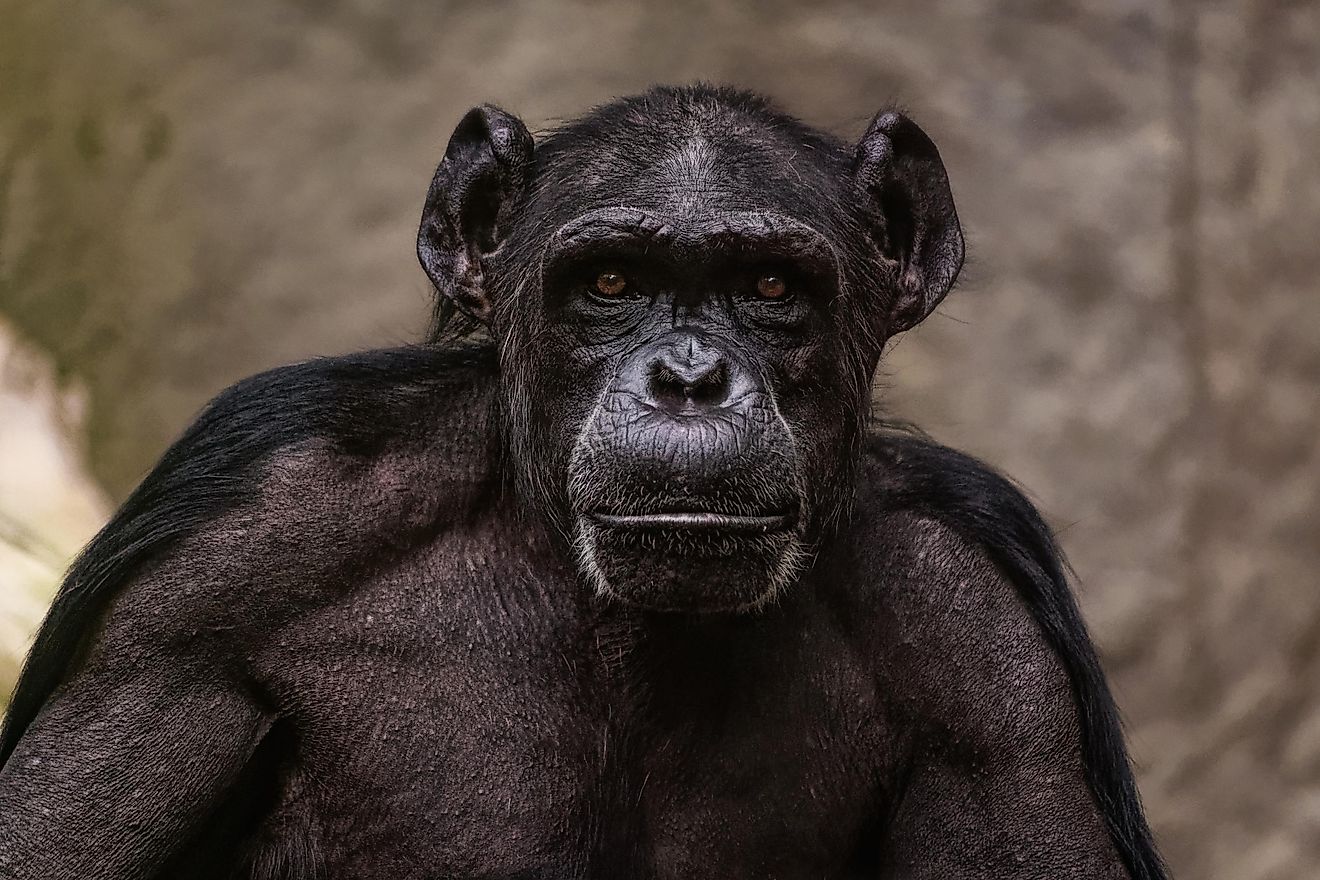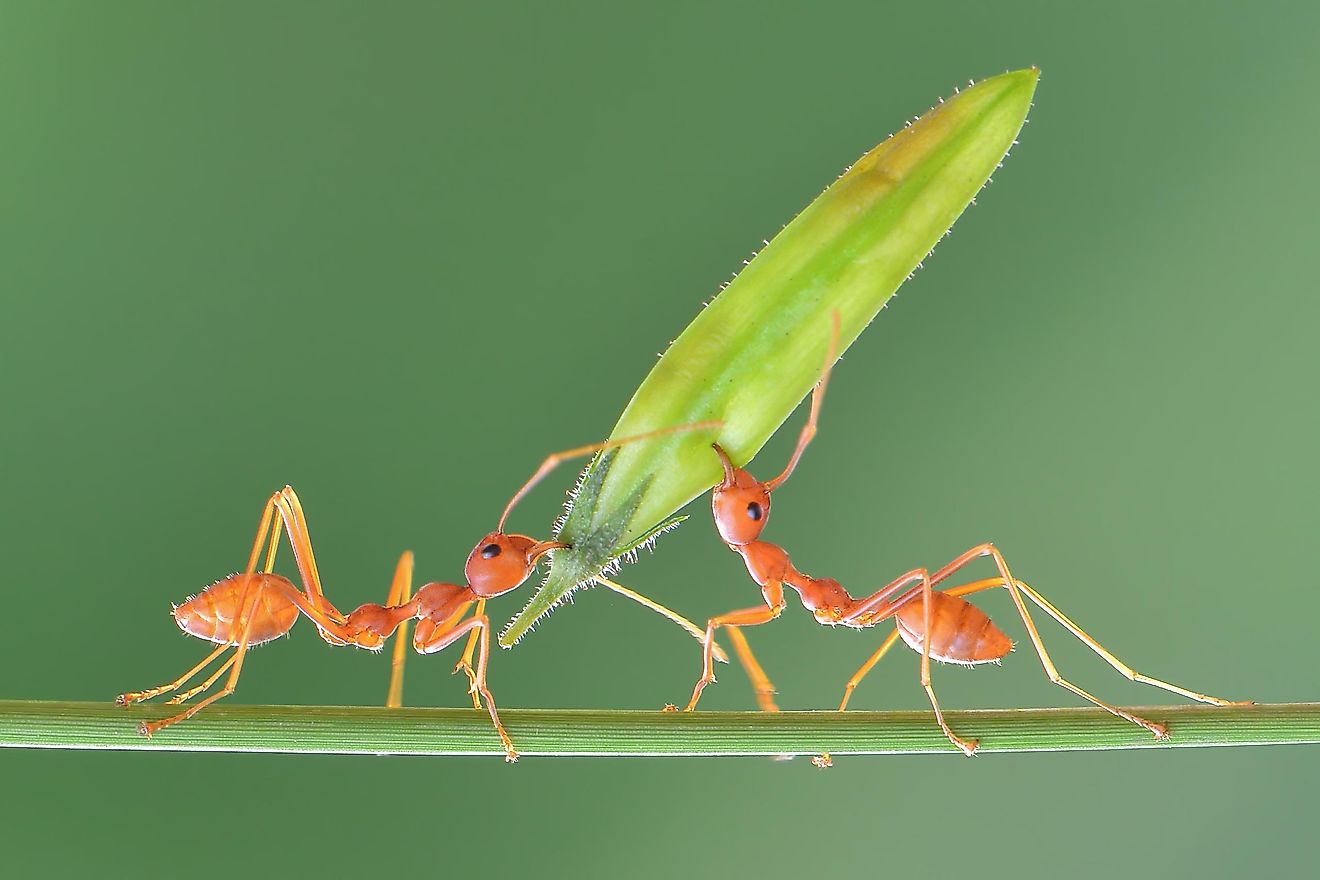In Mumbai, Leopards are Citizens Too
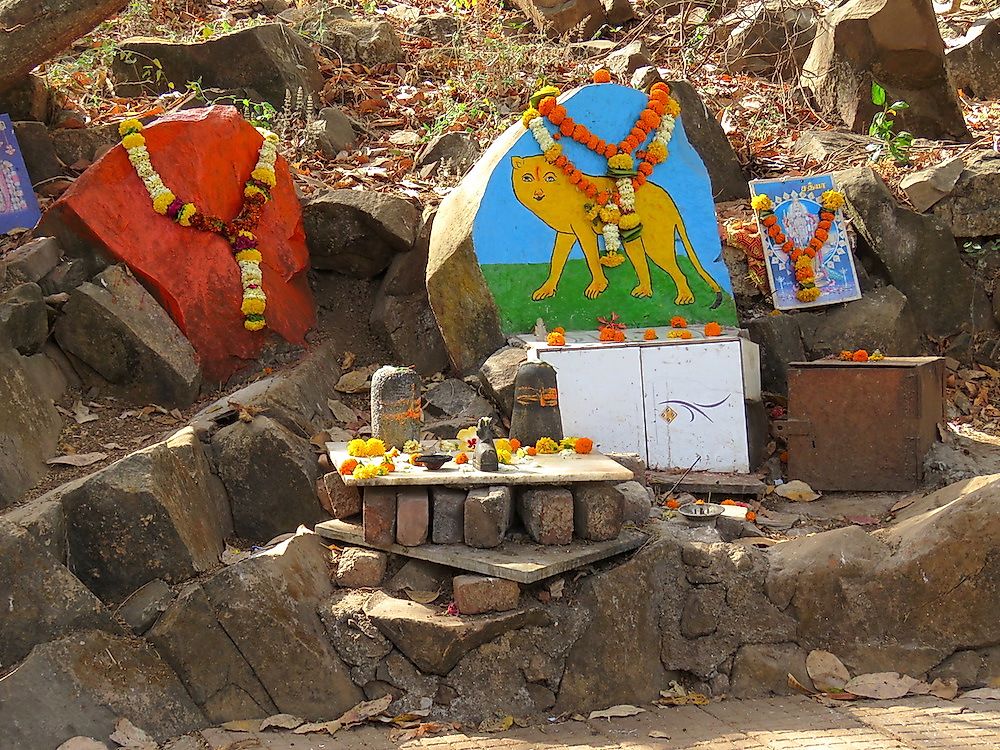
"The cultural values and virtues that I have, do not teach me to kill," mentioned Narendra Modi, the Prime Minister of India, when Bear Grylls presented him with a lethal weapon to protect himself against potential attack by a tiger in the wilderness of India. The above statement made by Modi was part of the Man vs Wild show aired on the Discovery Channel on August 12.
The representative of an estimated 1.3 billion-strong Indian population echoed the strongly rooted belief of his people in considering all lives, human and non-human, as having equal value and the same right to existence. This social tolerance prevalent among Indians could be the primary reason why India has managed to save threatened species well into the 21st century, even as these species were consumed by human greed in other parts of the world.
It could also be the factor that has permitted one of the world's most densely populated cities, Mumbai, to host a biodiverse national park, the Sanjay Gandhi National Park (SGNP), within its municipal boundaries. But that is not all. Incredibly, this national park is home to one of the world's highest density of leopards (approx. 21.55 per 100 sq km). And despite a human population density of around 20,000 people per sq km at the periphery of SGNP, the leopards thrive.
In this article, we explore the story of the evolution of the Sanjay Gandhi National Park (SGNP) and its leopards and discover the special bond between a predator and a "Mumbaikar." We are also privileged to have Dr. Anish Andheria, President of Wildlife Conservation Trust, India, and a renowned conservation scientist, to provide his valuable inputs to the story and investigate how this unique symbol of "human-wildlife bond" can be protected for the generations to come.
Breathing Life Into A Bustling City
Perhaps no other national park on our planet is "more urban" than the Sanjay Gandhi National Park (SGNP) of Mumbai, India's financial capital, and home to an estimated 20 million people in the metropolis. Perhaps only Kenya's Nairobi National Park can give it some competition, though it ultimately falls short. Mumbai's population density of around 22,937 persons per sq km outcompetes Nairobi's figure of 4,509 persons per sq km.
Like the city enveloping it, SGNP also has a dynamic history. It was never left alone. The human connection with this forest dates back to the 4th century BC when ancient international trade routes penetrated it. The green heartland of the forest was also the site of Buddhist learning and pilgrimage. However, for centuries, the human and non-human denizens of the region co-existed and mutually served each other.
When the British came, they brought their conservation strategies to India that were aimed to expand their colonial economy and infrastructural development. Two artificial lakes, the Vihar and Tulsi, were built by the British by damming the River Tasso to supply water to the flourishing city of Mumbai, then Bombay. Gradually, the British began consolidating land around these lakes to protect them against human intrusion. Post-independence, the Krishnagiri National Park was established in 1950 with an area of only 20 sq km to protect the catchment areas of these lakes. In 1968, the protected area was expanded to encompass 68.27 sq km and named Borivali National Park. The conserved space witnessed further augmentation in 1981 to occupy approximately 103 sq km when it was re-named as Sanjay Gandhi National Park (SGNP).
All the while, as the conservation sprawl was growing, something else was also happening synchronously – urban sprawl was also gnawing its way into the national park. The result, as expected, was elevated tension between the human and non-human occupants of the area, a subject of intense media attention and political outcry.
Today, despite its status as a national park with the highest level of legal protection of any conservation area in India, the SGNP has about 43 padas (hamlets or colonies) housing thousands of humans within its territorial limits. Both indigenous tribals and domestic migrants belonging to the lower economic strata of the Indian society are inhabitants of these padas. Although most of these residents travel outside the park to earn their daily wages, a significant section of them are reliant on the forest for firewood.
Dr. Andheria who has explored the park since his childhood, initially as a budding naturalist, and later as a committed conservationist explained the evolution of SGNP in recent decades.
"The Sanjay Gandhi National Park has witnessed a lot of encroachment in the past four decades. It is currently under tremendous pressure. The city now looms over the national park. With the real estate boom captivating Mumbai, tall skyscrapers have come up at the park's peripheries, polluting the natural skyline. Human densities in the padas in and around the park have also swelled. The major cause of concern is that the national park is getting increasingly disconnected from other forests to the north. Obviously, with anthropogenic pressure, there is degradation of habitat, and that hurts the species composition. Generalist species like the common crow have now invaded the remotest parts of the park, an indicator of disturbance and a death knell for several forest species. Water in some of the streams flowing through the park also dries up earlier than it did four decades back."
"However, on the positive front, the national park is still existent. It means that the forest department has managed to protect the park despite the excessive burden of urbanization on it. The fact that the Sanjay Gandhi National Park is alive within the administrative limits of one of the densest metropolises on Earth, is in itself a credible thing," mentioned Dr. Andheria, with a note of optimism.
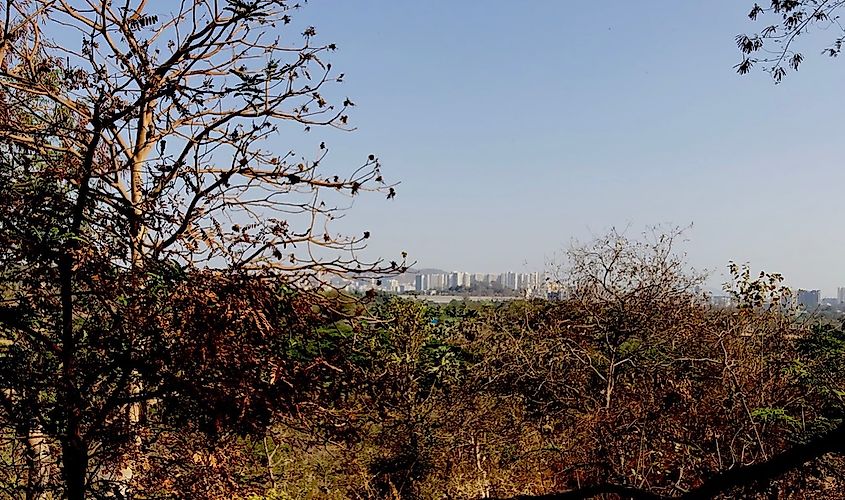
Skyscrapers as seen from the SGNP.
Leopards Of SGNP: Predators Or Protectors?
It is important to remember that unlike New York's Central Park or London's Hyde Park, Mumbai's SGNP is not merely a green space for recreation in an ever-busy metropolis. It is a notably biodiverse habitat with enormous conservation value. And what sets it apart from all other urban parks is that it is home to over 40 wild leopards who have somehow learned to live with the humans dominating the area!
What is more astonishing is that despite urbanization weighing down on SGNP, the leopard population in the park is remarkably stable. Studies conducted to estimate this population have furnished hope. In 2015, camera trapping in a study area of around 140 km2 in and around the park revealed a population size of around 35 leopards. Similar studies in 2017 and 2018 estimated the leopard populations to be 41 and 47 respectively. Incredible indeed.
It must be noted that although the leopard might be its star resident, SGNP also protects around 40 mammalian species, over 50 reptilian and amphibian species, 150 butterfly species, over 254 species of resident and migratory birds, among others. The entire bustling ecosystem makes Mumbai not only a cosmopolitan but also a "biodiverse metropolis."
Coming back to the leopards of SGNP, perhaps few predator populations in the world attract as much media attention as these leopards. Sometimes tagged as "man-eaters" and at other times regarded as "protectors," the media has portrayed the leopards of SGNP in a range of characters. Their true place in the hearts of the indigenous tribals, however, is clear from a scientific study conducted by Dr. Vidya Athreya, a leading leopard conservationist from India.
Dr. Athreya's study exhibited that locals living in India inside or near forests with big cats both fear and revere the predators. They acknowledge that the forest belongs to the predator. They even try to appease them with sacrificial offerings to prevent attacks on the human population.
Interestingly, unlike the British colonial rulers who associated predators with the terms "man-eating" and "cattle-killing," Indians had for centuries worshipped the big cats as deities. In Maharashtra, they lovingly refer to them as "Waghoba." Shrines of the Waghoba dot the tribal settlements in and around SGNP. Here, the locals carve images of tigers or leopards on stone or wood, decorate them with flower garlands and vermilion paint, and pray to their Waghoba for protection.
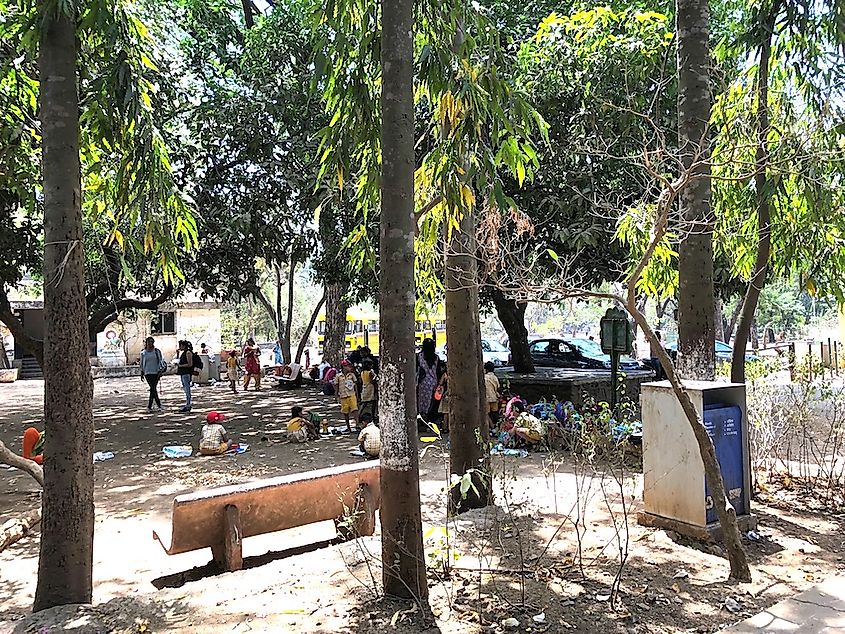
People picknicking inside the SGNP.
Human-Leopard Interaction
So, if the locals honor their Waghoba, why the high number of media reports focussing on the "human-leopard conflict" in and around SGNP?
According to National Geographic, it is far easier to die in India from civilization than from wildlife attacks. Road and rail accidents claim 381 and 80 lives every day in the country respectively. However, a big cat attack on humans, an extremely unusual event, always makes it to the headlines. What could be the possible reason? National Geographic explains that the uncommon nature of the incident and the fact that it triggers something primitive in the human psyche are responsible for this uproar.
In the case of SGNP's leopard-human dynamics, it is important to note that in the past, leopard attacks on humans in the area have exhibited episodic peaks. 84 of the 176 reported attacks from 1991-2013 occurred between 2002 and 2004. In June 2004 alone, 9 people were mauled down by leopards. What happened during this time? It was a mind-boggling question until Dr. Athreya's research came to the rescue.
With the help of her investigation in another leopard inhabited landscape in Junnar, Maharashtra, Dr. Vidya Athreya could deduce a possible cause, which she mentions in a report presented by The Guardian. According to her, the relocation and release of leopards involved in high degree of interaction with people in other parts of Maharashtra and the peripheral areas of SGNP into SGNP sparked the events of leopard attacks on humans. The relocated leopards were compelled to fight for territory and food with the resident leopard population. The stressed-out predators resorted to attacking humans who were ultimately accountable for their sorry state. And once the relocations were arrested, the leopard attacks also dwindled dramatically.
However, the story of Mumbai's leopards does not end here in a happily ever after. In recent years, complaints of leopard attacks have surfaced once again. This time, however, there were better tactics to handle such issues. One such strategy was the adoption of the project "Mumbaikars for SGNP." It is an initiative by the forest department to involve citizens and researchers to work in collaboration with the government to monitor the wildlife of SGNP and to spread awareness about the leopards among people residing in the vicinity of SGNP.
The Future of Mumbai Leopards
Given the glaring changes happening all around SGNP, and the escalating issue of human encroachment in the forested habitat, do Mumbai's leopards have a future?
Dr. Andheria answers this question.
"The leopard density in Mumbai's SGNP and its peripheral areas is phenomenally high, and that is because the city provides them with an unending supply of dogs and other domestic prey. Human habitations both inside and along the periphery of this relatively small forest, supports a large population of feral or free-ranging dogs and livestock. The garbage dumped in and around the human settlements attract dogs, cats and pigs. Opportunists that they are when it comes to feeding, the leopards take advantage of the situation, and prey on these animals. The abundant supply of these domesticated species sustains an unusually high density of leopards."
"However, the leopard population cannot continue to grow forever," continues Dr. Andheria. "Leopards are territorial, they need space to grow. Even if the supply of dogs and livestock continues, the population cannot grow beyond a certain threshold level. With the quality of the forest degrading and the human encroachments in the forested habitat growing, the intraspecific competition between leopards and inter-specific conflicts between humans and leopards are bound to intensify. Also, if there is severe poaching of leopards in the future, it will reflect negatively on their population."
The Dogs Of Mumbai: A Handshake Between Humans And Leopards Of The City
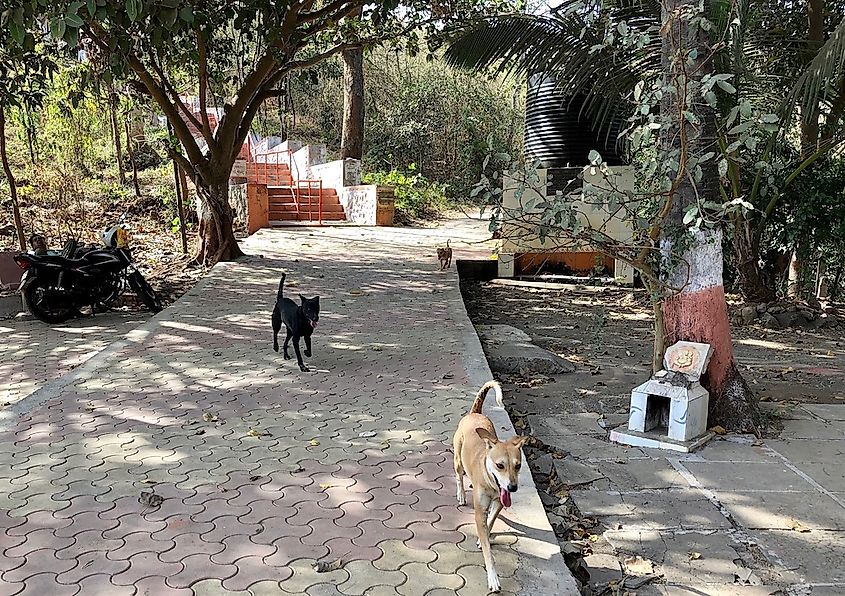
Free-range dogs inside a tribal temple complex on the peripheries of the SGNP. Photo credit: World Atlas.
Human's best friend is also the lifeline of Mumbai's leopards. As mentioned earlier, it is the availability of dogs (free-ranging, semi-owned, and pets) and domestic prey in and around SGNP that supports a high density of leopards in the area.
According to research by Nikit Surve, domestic prey (dogs, cattle, pigs, goats, buffalo calves, etc.), and wild prey contribute to 43% and 57%, respectively, of a leopard’s diet in terms of relative biomass consumed in the study area in and around SGNP.
Leaving aside the predator-prey relation, the human-dog-leopard interaction in the area is, astoundingly complex – mutually beneficial and also simultaneously harmful.
Indians have a special relationship with almost every animal including dogs and leopards. In India, killing any dog, free-ranging or pet, is a punishable offense by law. Sterilization is the acceptable method of stray population control in the country. Euthanization is not. The tolerance of Indians for dogs has sustained a massive population of "stray" dogs almost in every nook and cranny of this vast nation. Millions of dogs cohabit with humans in India's urban and rural landscapes. Mumbai is no exception.
It is this compassionate nature of Indians that have also profited Mumbai's leopards who get easy prey in and around human settlements in the form of dogs.
Interestingly, a 2018 study from the Ecological Society of America manages to put India's leopards in a heroic role in the tripartite relationship of Mumbai's humans-dogs-leopards. According to the study, these leopards are defending Mumbaikars from the fatal disease rabies by eliminating the dogs. At least 90 human lives are spared a painful death from rabies by the leopards.
The study also thrusts an economic aspect to the role of leopards by proving that they save the Municipal Corporation of Greater Mumbai about US$18,000 in sterilization costs.
However, "good" the leopards may be, explaining the social benefits of these predators in controlling dog populations and portraying the leopards as "saviors" might not completely succeed in stealing away the thunder from the dogs. While Indians worship leopards as deities, they also treasure their stray dogs like family. One example mentioned in this article proves the same.
So, ultimately, it appears that it is the emotional attachments between Indians and animals that work in favor of conservation in this country. Whether this will change with the impact of globalization, only the future will tell.
Complex Issue, Multiple Approaches To Solve It
From the above discussion, it is clear that the human-wildlife interactions in SGNP and its peripheries are determined by a plethora of factors. There is no easy way to manage adverse situations that arise due to confrontations between humans and leopards in the area. Preserving the park for the future is also a gigantic task. Therefore, no single solution can fetch the desired result. As such, conservation biologists and park managers have brainstormed several potential solutions to ensure SGNP's survival. Several of them have borne fruit, others have been limited to paperwork. Some such solutions proposed by researchers and media networks are as follows:
1. While translocation of problem animals is the most common management strategy used in India, researchers recommend against the practice.
2. Use of geo-informatics approach to analyze human-wildlife interactions.
3. Estimation and control of the abundance of free-ranging dogs in and around SGNP.
4. Removal of human encroachments from SGNP
5. Proper management of garbage disposal in and around SGNP
6. Erection of barriers (wall) to urban sprawl around the park.
7. No construction of surface road through eco-sensitive zone of SGNP.
8. Payment for ecosystem services (PES).
The last point demands further attention as the concept of PES is yet to become popular in India but its need has been stressed upon by wildlife conservationists. Dr. Andheria explains why.
"India's track record on conservation has been very good. But now, because of developmental pressures, there is considerable deforestation, degradation, and fragmentation of wildlife habitats across the country. Thus, PES might be an effective conservation tool in the present times."
Ecosystem services refer to the products or services derived by humans from a natural ecosystem at absolutely zero cost. Clean air and drinking water, temperature regulation, forest produce like fruits, firewood, and others, natural pollination of crops, scavenging of livestock carcasses, etc., are some examples of the same. The health and survival of humans and to some extent, their livelihoods, directly or indirectly depend on ecosystem services.
In a study published in the Environmental Development journal by Frédéric Landy, the author compares the case of the Nairobi National Park and SGNP and mentions how PES is included in the conservation model of the former but is lacking in the latter. He also suggests that the eco-ethnic identity of the tribal population of SGNP be recognized and their role in maintaining the national park be rewarded with PES.
Dr. Andheria expresses his agreement with the author.
"There is a need to recognize that the people living along the boundaries of the forest have a role to play in protecting it," he mentioned.
"Once we start adding value to the ecosystem services obtained from SGNP, we can convince others that the forest is important to their survival and prosperity. For example, nearly 7% of the massive population of Mumbai is served drinking water from the Vihar and Tulsi Lakes. Thus, safeguarding the forest is vital for Mumbai, and it is the people bordering the forest who can best do it. If they are compensated for the restrictions imposed on them, they will be encouraged to keep the wild habitat safe, and will not be antagonistic to the activities of the forest department. Thus PES can be used as a tool to change the way the local people are interacting with the forest."
Media: The Vital Mediator Between Mumbaikars And Leopards
The media has tremendous power. It can dramatically alter or amplify the perception of the masses on any issue including those related to wildlife conservation. It can influence the public to dread leopards or adore them. The media also grabs the attention of decision-makers and interest groups towards conservation matters.
However, scientists fret over the fact that literature dealing with the media's response to human-wildlife interaction is insufficient. Luckily for the leopards of Mumbai, one such academic article is dedicated to understanding the media's representation of Mumbai's human-leopard interactions.
The findings of the study bring some good news for Mumbai's leopards. It mentions that neutral headlines associated with human-leopard interaction in Mumbai have increased over the years. Now, instead of portraying leopards as villains, media channels prefer to use more unbiased terms when describing incidents of confrontations between humans and leopards in Mumbai. The researchers predict that this positive change in media attitude could have been influenced by increased interactions between conservation scientists and media professionals.
The study also found significant differences between reporting styles and content between different media outlets. Financial resources of media channels, philosophies of media professionals, and socioeconomic status of readers and producers are believed to drive the variations.
The study also claims that among the many solutions provided by media to mitigate human-leopard conflict in Mumbai, few suggested the necessity of thorough research and monitoring. The level of evidence-based reporting is also low in all cases other than episodic, event-driven articles.
Researchers also suggest that to get the best results out of the media, conservation professionals and managers must adopt communication strategies that are specific to the societal and linguistic nature of media-outlets.
Dr. Andheria, who has successfully communicated the story of India's wildlife to various media outlets, both national and regional, over several years, shares some such strategies with us. They have been enlisted below.
- Contrary to popular belief, regional print media (local languages) is powerful and needs to be educated and involved in demystifying the role played by both the forest and large carnivores in stabilizing the ecosystem.
- Familiarization visits must be organized by for journalists so that they understand the issues inside out.
- Action-oriented conservation campaigns must be organized in collaboration with media houses to amplify reach and involve the citizens organically in safeguarding SGNP.
- Politicians can be held accountable through constructive campaigns that focus on win-win solutions for both development and conservation.
- Celebrities can also be roped in to rally the cause of SGNP and its leopards by making the connection between the forest and the ecosystem services such as oxygen, temperature regulation and water that it provides.
Fight For Nature, Not Fight Against It
Despite the intricate web of complex issues tormenting the SGNP trapped amidst it all, the park and its wild inhabitants are very much living. The diligent efforts of the state forest department, non-governmental organizations, volunteering citizens scientists, and the ethos of the Indian people deserve credit for this feat. It is important, therefore, to guarantee that this harmonious bond between humans and the wildlife of India is not breached by India's growing appetite for rapid growth and advancement. Instead, sustainable development should be the principal "mantra."
In the end, another powerful message delivered by Prime Minister Modi of India in Man vs Wild cautions his people. He stated "I believe that we should not regard nature as dangerous. If we engage in conflict with nature, then everything becomes dangerous around us, including fellow humans."
World Atlas would like to thank Dr. Anish Andheria for his expert advice and support in writing this article.










